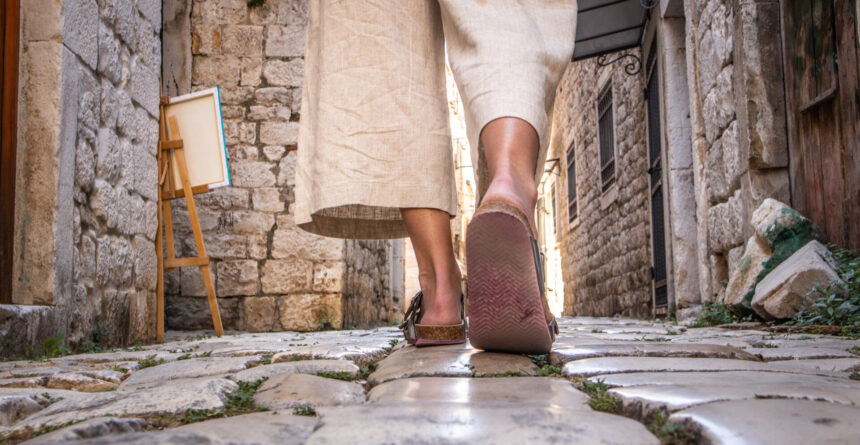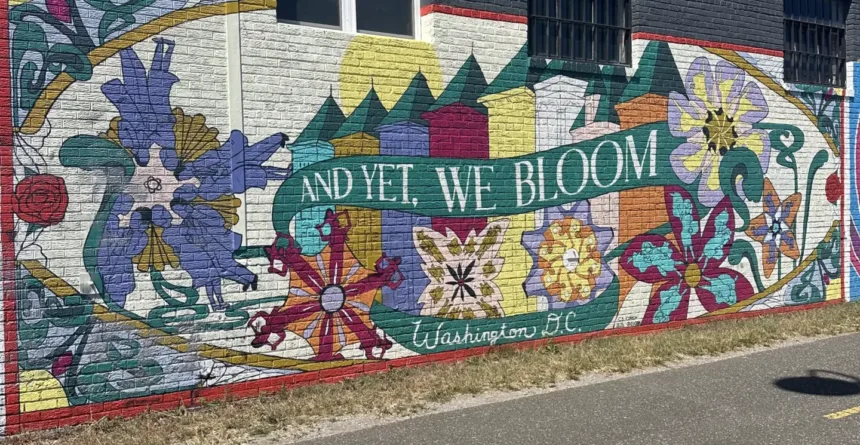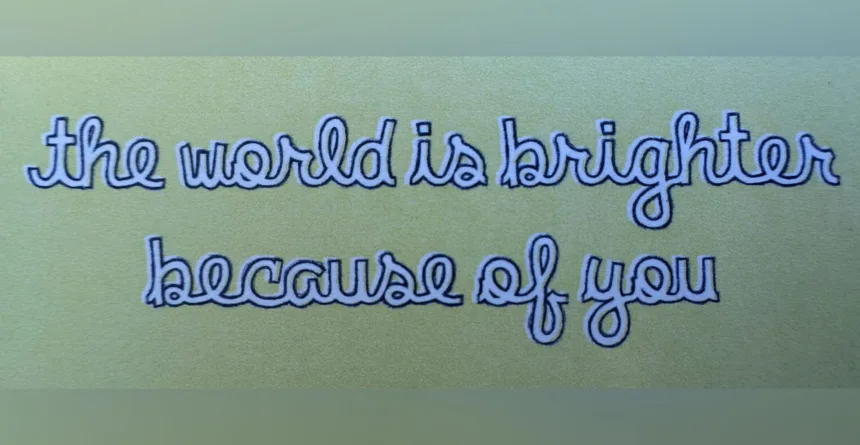FIND A SAFE SPACE
November 3, 2025

My Safe Space
Imagine, you are taking a walk in a quaint little village in the heart of Tuscany, Italy. Even if you have not been to Italy, you can probably create an image in your mind of what this experience is like. The buildings around you are old and rustic, encompassing the narrow side streets that you walk down. You balance along the cobblestone and are careful not to trip. It is a hot day and you find yourself stroll into the nearest café for a break from the heat. There is no AC, but you are welcomed in by the sweet smell of pastries, espresso, and the sounds of conversations being had in the comforting Italian language. Suddenly you forget about the heat.
This is a scene that brings me peace. It is a scene from the many times I would visit family in their small Tuscan town and where I grew to love the ease of an Italian lifestyle. It is also where I bring my mind to when I am in need of some grounding in my current environment. It is difficult to pinpoint only one specific aspect from this setting that makes me feel safe. Perhaps the embracing nature of the culture, the sensory experience from the wonderful aromas, or because all of it is a reminder of a critical person from my own development who always made me feel safe.
You can find safety within yourself…
While I may not be able to physically be in this little Italian village all the time, I can mentally go there whenever I choose. Life knowingly brings many challenges, and it is necessary for us to have a safe space that we can go to, even if it is in our minds. Your place that gives you a sense of grounding may be different from the one I have described, or you may still be figuring out who, what, or where that safe space is. That is ok. Before we can figure out what our safe space is, we first need to understand how it feels – and this takes time.
Safety in Therapy
With the onset of covid, therapists have had to wrestle with the realities of a virtual therapy setting and consider concerns posed on confidentiality and other impositions to the productivity of therapy. Previous to telehealth, therapy took place in a controlled environment. If the client felt unsafe at home, the therapist’s office would be a place where the client could feel physically safe. Less considered though was the importance that this physical safety had on mental safety. The rise in telehealth posed many important questions for therapists to consider and a main concern became: How do we ensure the client is safe during therapy?
If you are familiar with the process of virtual therapy, you may often hear therapists ask: “Are you in a safe space?” prior to beginning a session or an equivalent phrase to this. While the question is meant to check if a client has physical privacy in their environment, it also serves to ask if the client feels mentally safe in that moment and can be vulnerable. In therapy, safety implies both physical and mental protection from any harmful threat. Both physical and mental safety are necessary for therapy to be effective. However, it may be easier to figure out how we can create a physically safe environment than a mentally safe one.
Safety is a learned experience…
Safety is a sense of security that is often learned in childhood. Babies are provided both physical and mental safety from the care and continuity of their parents, and children later develop skills to create their own safety if they live in emotionally regulated homes. However, for those who did not have this kind of upbringing, a sense of safety is understandably difficult to even feel. Clients often come to therapy seeking out a safe space. They want to feel heard, understood, and supported. They may be lacking those supports in their life currently, and, for some, therapy may be the first instance in which one has ever felt safe.
The purpose of therapy is to create a safe space. It is very difficult to be vulnerable if one does not feel safe in their environment. Over time, safety can be established through trust in the therapeutic relationship that is developed and the continuity of care. A client knows that they will see their therapist at a specific time each week and there is security in knowing that during that time they will receive support. Over the course of therapy treatment, a client may notice they are able to become emotionally regulated more easily. The nervous system becomes less reactive as well and the brain creates new neural pathways to solidify this learned experience. The client becomes familiar with their body’s state of calmness and may then be able to find their own forms of safety outside of the therapy setting as well.
Safety is Not Always Comfortable
When I arrived back in New York it took me some time to readjust to the noise and hustle-bustle energy that consumes the city. My sense of safety started to feel threatened. In an attempt to ground myself, I searched for reminders of my Italian roots. I noticed how the sensory experience of brewing fresh espresso on the stove or listening to my favorite Italian songs would transport me back to the calmness that Italy brought me. The more I engaged with these reminders, and became aware of my physical sense of calmness, the more easily I could return to this state.
Finding safety takes risk…
It is a myth that staying in your comfort zone is necessary to feel safe, in fact, sometimes it takes leaving that zone in order find what feels safe. Comfort and safety are not the same, especially for those whose sense of normality has not always provided them with safety.
Since beginning my professional role as a therapist, it has been my goal to provide clients with a feeling of safety in our environment together and to support them in their ability to find their own safe spaces, whatever that may be. My clients may not always feel comfortable in session, and often times they won’t because vulnerability is a very uncomfortable experience. Therapy challenges clients to venture into what may be unfamiliar territory. It is not to be understated that therapy takes a lot of courage, but it is not a path walked alone and together we can create a safe space. Contact Us.



